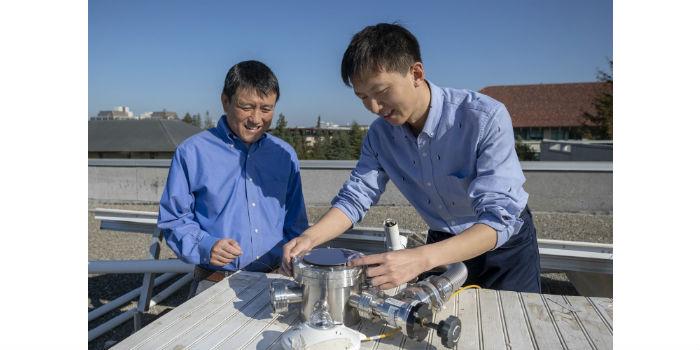 United States. A new rooftop device under development by researchers at Stanford University will be able to produce electricity from sunlight while also emitting heat directly into space to cool buildings.
United States. A new rooftop device under development by researchers at Stanford University will be able to produce electricity from sunlight while also emitting heat directly into space to cool buildings.
Today, these arrangements do one thing: they convert sunlight into electricity. But engineer Shanhui Fan's lab has built a device that could serve a dual purpose: generating electricity and cooling buildings.
"We built the first device that could one day generate power and save energy, in the same place and at the same time, controlling two very different properties of light," said Fan, lead author of a paper that appeared Nov. 8 in Joule.
The sun-facing layer of the device is nothing new. It is made of the same semiconductor materials that have long-adorned ceilings to convert visible light into electricity. The novelty lies in the lower layer of the device, which is based on materials that can transmit heat from the ceiling into space through a process known as radiation cooling.
In radiation cooling, objects, including our own bodies, emit heat by radiating infrared light. That's the invisible light that night vision goggles detect. Normally, this form of cooling doesn't work well for something like a building because Earth's atmosphere acts like a thick blanket and traps most of the heat near the building rather than allowing it to escape, ultimately, in the great coldness of space.
Holes in the blanket
Fan's cooling technology takes advantage of the fact that this thick atmospheric blanket essentially has holes that allow a particular wavelength of infrared light to pass directly into space. In previous work, Fan had developed materials that can convert the heat radiating from a building into a particular infrared wavelength that can pass directly through the atmosphere. These materials release heat into space and could save energy that would have been needed to condition the air inside a building. That same material is what Fan placed under the standard solar layer on his new device.
Zhen Chen, who led the experiments as a postdoctoral researcher in Fan's lab, said the researchers built a prototype over the diameter of a cake dish and mounted their device on the roof of a Stanford building. They then compared the ambient air temperature on the roof with the temperatures of the upper and lower layers of the device. The top layer device was hotter than the rooftop air, which made sense because it absorbed sunlight. But, as the researchers expected, the bottom layer of the device was significantly cooler than the air on the ceiling.
"This shows that heat radiated from the bottom, through the top layer and into space," said Chen, who is now a professor at Southeast China University.
What they couldn't prove is whether the device also produced electricity. The top layer in this experiment lacked the sheet metal, normally found in solar cells, which would have blocked the output of infrared light. The team is now designing solar cells that work without metal coatings to couple with the radiative cooling layer.
"We believe we can build a practical device that does both," Fan said.
Source: Stanford University.














